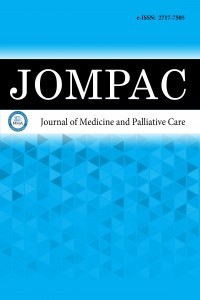1.
Xiu WJ, Zheng YY, Wu TT, et al. Hemoglobin-to-red-cell distribution width ratio is a novel predictor of long-term patient outcomes after percutaneous coronary intervention: a retrospective cohort study. <em>Front Cardiovasc Med</em>. 2022;16(9): 726025.
2.
Kılıç O, Mustu M, Suygun H, Con E, Karakurt A, Fatma S. Hemoglobin/red cell distribution width ratio is associated with poor prognosis in patients with acute coronary syndrome in long-term follow-up. <em>Int J Cardiovasc Sci</em>. 2024;37(1):20230099.
3.
Aktas G, Tel BA, Duman TT. Inflammatory indices derived from hemogram as prognostic markers of cardiovascular outcome. <em>Int J Cardiovasc Sci</em>. 2024;37(1):20240012.
4.
Huo LK, Chen KY, Tse G, Liu T. Association of inflammatory markers based on routine blood with prognosis in patients underwent percutaneous coronary intervention. <em>Medicine</em>. 2024; 103(19):38118.
5.
Li D, Ruan Z, Wu B. Association of red blood cell distribution width-albumin ratio for acute myocardial infarction patients with mortality: a retrospective cohort study. <em>Clin Appl Thromb Hemost</em>. 2022;28(1):10760296221121286.
6.
Jian L, Zhang Z, Zhou Q, Duan X, Ge L. Red cell distribution width/albumin ratio: a predictor of in-hospital all-cause mortality in patients with acute myocardial infarction in the ICU. <em>Int J Gen Med</em>. 2023;27(16):745-756.
7.
Huang S, Zhou Q, Guo N, et al. Association between red blood cell distribution width and in-hospital mortality in acute myocardial infarction.<em> Medicine</em>. 2021;100(15):25404.
8.
Leonardi S, Gragnano F, Carrara G, et al. Prognostic implications of declining hemoglobin content in patients hospitalized with acute coronary syndromes. <em>J Am Coll Cardiol</em>. 2021;77(4):375-388.
9.
Qin Z, Liao N, Lu X, Duan X, Zhou Q, Ge L. Relationship between the hemoglobin-to-red cell distribution width ratio and all-cause mortality in ischemic stroke patients with atrial fibrillation: an analysis from the MIMIC-IV database. <em>Neuropsychiatry Dis Treat</em>. 2022;18(18):341-354.
10.
Wang J, Chen Z, Yang H, Li H, Chen R, Yu J. Relationship between the hemoglobin-to-red cell distribution width ratio and all-cause mortality in septic patients with atrial fibrillation: based on propensity score matching method. <em>J Cardiovasc Dev Dis</em>. 2022;9(11):400.
11.
Qu J, Zhou T, Xue M, et al. Correlation analysis of hemoglobin-to-red blood cell distribution width ratio and frailty in elderly patients with coronary heart disease. <em>Front Cardiovasc Med</em>. 2021; 27(8):728800.
12.
Byrne RA, Rossello X, Coughlan JJ, et al. 2023 ESC Guidelines for the management of acute coronary syndromes. <em>Eur Heart J</em>. 2023;44(38):3720-3826.
13.
Ababneh MJ, Smadi MM, Al-Kasasbeh A, et al. Validity of TIMI risk score and heart score for risk assessment of patients with unstable angina/ non-st elevation myocardial infarction presented to an emergency department in Jordan. <em>Open Access Emerg Med</em>. 2023;18(15):465-471.
14.
Salimi A, Zolghadrasli A, Jahangiri S, et al. The potential of HEART score to detect the severity of coronary artery disease according to SYNTAX score. <em>Sci Rep.</em> 2023;13(1):7228.
15.
Rostami A, Tajlil A, Separham A, et al. Association between neutrophil-to-lymphocyte ratio and the systemic inflammatory immunologic index and the angiographic SYNTAX score and the TIMI flow grade in acute STEMI: a cohort study. <em>J Tehran Heart Cent</em>. 2021;16(4):147-155.
16.
Li N, Zhou H, Tang Q. Red blood cell distribution width: a novel predictive indicator for cardiovascular and cerebrovascular diseases. <em>Dis Markers</em>. 2017;17(20):7089493.
17.
Khaki S, Mortazavi SH, Bozorgi A, Sadeghian S, Khoshnevis M, Mahmoodian M. Relationship between red blood cell distribution width and mortality of patients with acute myocardial infarction referring to TEHRAN heart center. <em>Crit Pathw Cardiol</em>. 2015;14 (33):112-115.
18.
Wei J, Yang RX, Ye Q, et al. Higher risk of myocardial injury in chest pain patients with elevated red blood cell distribution width. <em>Clin Chim Acta</em>. 2018;481(1):121-125.
19.
Ishigami J, Grams ME, Naik RP, et al. Hemoglobin, albuminuria, and kidney function in cardiovascular risk: the ARIC (atherosclerosis risk in communities) study. <em>J Am Heart Assoc</em>. 2018;7(2):007209.
20.
Uyarel H, Ergelen M, Cicek G, et al. Red cell distribution width as a novel prognostic marker in patients undergoing primary angioplasty for acute myocardial infarction. <em>Coron Artery Dis</em>. 2011;22(3):138-144.
21.
Ndrepepa G, Neumann FJ, Menichelli M, et al. Prognostic value of hemoglobin drop in patients with acute coronary syndromes. <em>Eur J Clin Invest</em>. 2021;51(12):13670.
22.
Bozkaya Y, Kurt B, Gürler F. A prognostic parameter in advanced non-small cell lung cancer: The ratio of hemoglobin-to-red cell distribution width. <em>Int J Clin Oncol</em>. 2019;24(7):798-806.
23.
Yılmaz A, Mirili C, Tekin SB, Bilici M. The ratio of hemoglobin to red cell distribution width predicts survival in patients with gastric cancer treated by neoadjuvant FLOT: a retrospective study. <em>Ir J Med Sci</em>. 2020;189(1):91-102.
24.
Song J, Yu T, Yan Q, Zhang Q, Wang L. Association of hemoglobin to red blood cell distribution width-standard deviation (RDW-SD) ratio and 3-month readmission in elderly chinese patients with heart failure:a retrospective cohort study. <em>Int J Gen Med</em>. 2023;24(16):303-315.

